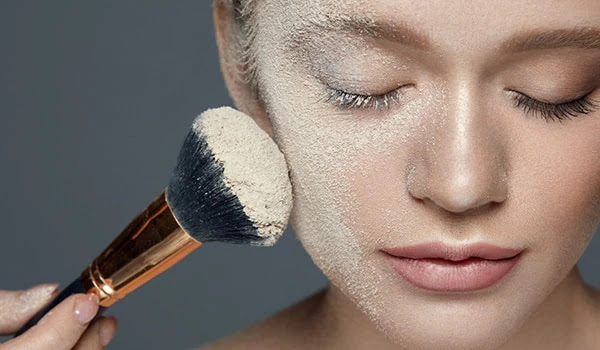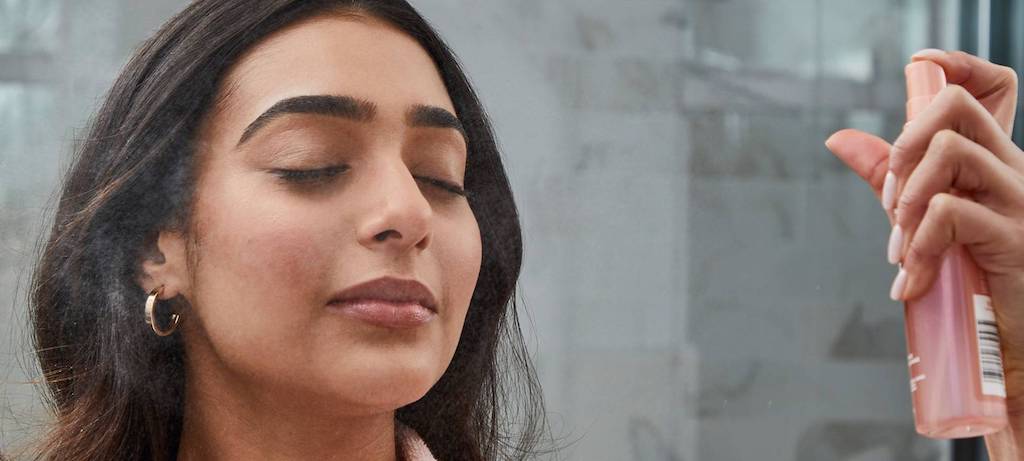Setting Spray vs. Setting Powder: Your Makeup’s Secret Weapon
You’ve got your hands on the finest makeup products, but there’s more to long-lasting beauty than what meets the eye. The magic lies in setting products, specifically setting spray and setting powder. Are they the same? Not at all. In this article, we delve into the realm of setting sprays and powders, exploring their differences, helping you pick the best one for your skin, and revealing the art of makeup extension. Read on to discover the beauty secrets that make your makeup stay flawless.
Tailored Tips for Your Skin Type
Before we dive into the world of setting products, let’s cater to your skin type. Here are some quick tips for various skin types:
For Dry Skin:
- Use Hyaluronic Acid: Opt for a setting powder with hyaluronic acid to boost hydration. Steer clear of setting sprays with alcohol, as they can further dehydrate your skin.
- Alternative Uses: Setting powder can double as a lip mattifier and even a dry shampoo for your hair.
- Homemade Setting Spray: Explore natural ingredients like aloe vera gel, glycerine, rosewater, or lavender oil to craft a setting spray at home.
- Layer It Up: When you have dry skin, applying a setting spray in between each makeup product ensures your layers stay intact.
What Is Setting Powder?
Setting powder is your makeup’s best friend. Here’s a quick rundown:
- It comes in two forms: loose and pressed, and you’ll need a brush or puff for application.
- Loose powder, finely textured with ingredients like talc and silica, offers lightweight coverage and absorbs excess oil. Ideal for oily and combination skin types and liquid foundation enthusiasts.
- Pressed powder is semi-solid and user-friendly.
- Setting powder keeps your foundation in place, reduces shine, and ensures a long-lasting semi-matte look.
- It can be translucent or slightly tinted to match your skin tone, offering a flawless canvas for additional products.
- Setting powder is your go-to for an airbrushed, matte finish, suitable for normal, oily skin types, or those concerned with creasing.

Pro Tips for Setting Powder:
- Look for ingredients like cornstarch, silica, and mica in setting powders, especially beneficial for oily skin.
- Differentiate between setting powder and finishing powder. Finishing powder comes after setting powder to conceal lines and control shine.
- If you’re wearing foundation or applying concealer, setting powder should be your choice over setting spray.
What Is Setting Spray?
Unlike setting powder’s precision, setting spray is an all-encompassing mist. Here’s what you need to know:
- Setting spray can be applied all over your skin, not just your face, once your makeup is complete.
- Use it as a prep step and a finishing touch for your makeup, including your face and decollete area.
- It imparts a lightweight, skin-like finish without clogging your pores, offering both dewy and matte options.
- Setting spray can also enhance your highlighter and make eyeshadow application a breeze.
Pro Tips for Setting Spray:
- For dry skin, opt for humectant mists that lock in moisture and offer a softer, less-textured look.
- Illuminating mists contain micro-fine light-reflective particles, providing a radiant glow.
- Oily skin benefits from setting sprays with ingredients like aloe vera, witch hazel, and rose water, tackling excess oil. Mattifying mists create a softer look minus extra shine.

How to Use Setting Powder
Let’s explore the step-by-step guide to using setting powder effectively:
- After applying foundation, concealer, blush, or any other face makeup, it’s time for setting powder.
- Choose a soft, fluffy brush with a tapered end or a small makeup puff for even application.
- Dip your brush into the powder and tap off excess product. Apply using gentle tapping motions, focusing on areas prone to oil buildup, like the sides of your nose, under the eyes, and the T-zone.
- Instead of aggressive blending, press and roll the brush to set your makeup, following the ‘upside-down V’ shape.
- If you prefer an all-over application, use a flat powder brush.
- Add a finishing powder if needed.
How to Use Setting Spray
For the perfect, long-lasting finish, follow these steps for setting spray:
- Complete your makeup routine, from foundation and concealer to lipstick and eyeliner.
- Shake the spray well and hold it approximately 8 inches away from your face. Aim for a light mist, not a heavy dousing.
- Close your eyes and spritz the center of your face and forehead.
- Move to the sides of your face, chin, and neck.
- Allow it to dry, and you’re all set!
Combining Setting Spray and Powder
Wondering if you should use both setting spray and powder? You can! Applying setting spray after loose setting powder can further extend your makeup’s longevity. There are no strict rules; understanding your skin type and requirements is key.
Using Setting Spray Without Makeup
Even without makeup, you can benefit from setting spray. If you have dry skin, setting spray adds an extra layer of hydration. Just be cautious with frequent use, especially with alcohol-containing sprays.
Key Takeaways: Setting Spray vs. Setting Powder
Setting products are essential for long-lasting makeup, but remember they serve different purposes:
- Setting powder delivers a matte finish, while setting spray offers dewy and matte options.
- Use setting spray as a final touch, covering your entire face, and setting powder for targeted oil-prone areas.
Choose the right product based on your skin type and desired finish for exceptional makeup results. Whether you’re aiming for a natural look or a dramatic masterpiece, setting powder and setting spray have got your back. They not only prevent makeup from creasing but also provide a quick fix when needed.
Frequently Asked Questions: Setting Spray vs. Setting Powder
1. Is setting spray applied before or after makeup?
Setting spray can be used both before and after applying makeup, ensuring it sets and lasts longer.
2. Should you apply setting spray before foundation?
Indeed, you can use setting spray as a “base” for an additional layer of protection between your skincare and makeup products.
3. How often should setting spray or setting powder be applied during the day?
To maintain budge-proof makeup, consider applying setting spray 2-3 times a week or whenever you wear heavy makeup. You can also use it both before and after your makeup application for extended wear. On the other hand, setting powder is perfect for touch-ups throughout the day, ideal for whenever you want your makeup to last longer.
4. How can you remove setting spray or setting powder at the end of the day?
Easily remove them with a cleansing lotion and cotton balls. Follow up with a foaming cleanser to achieve squeaky-clean skin.
Image Source: Google
Latest Posts:
- Transforming Small Spaces: Ideas for a Personal Wellness Sanctuary
- Sparkling Elegance: Jeulia Moissanite Rings, Ring Sets and Promise Rings for Women
- Elegance in Every Step: A Comprehensive Guide to Women’s Flats
- Boost Your Confidence Today: 5 Proven Steps to Shine Brighter
- The Timeless Charm of Banarasi Sarees: Why They’re Passed Down Generations
- Top Things to Gift to a Friend Who Commutes
- Quick Relaxation Techniques for Blood Pressure Management
- Bold and Beautiful: Embrace the Oversize Shirt Trend
- Unleash Your Inner Y2K Diva With Cherrykitten’s Exclusive Collection





